Think of composting as alchemy for your kitchen scraps and yard cuttings: turning “waste” into “black gold.”
Here on Grand Bahama—with its thin limestone soils, salt-kissed breezes, and tight waste management infrastructure—composting isn’t just a hobby. It’s a way to reclaim nutrients, reduce garbage, and build a more resilient community.
In this guide, I’ll walk you through why composting matters, what you can compost (and what not to), how to set it up at home or in a small space, tips for making it work in our unique tropical environment, and stories from the Caribbean that show just how powerful composting can be.
By the end, I hope you’ll feel empowered to start your own compost system—no matter how small—and know you’re making a tangible difference for your garden and your island.
Why Compost? The Case for Turning Scraps Into Soil
Before we get into the how, let’s talk about the why. Why bother composting when you can just toss your food scraps in the trash? The answer lies in the profound impact this simple act has on our planet, our communities, and our ability to grow food.
1. Composting as Climate Action
Food waste isn’t just a nuisance—it’s a climate issue. When organics are dumped in landfills, they decompose without oxygen and release methane, a greenhouse gas more than 80 times as potent as carbon dioxide. Globally, food loss and waste account for nearly 10% of total greenhouse gas emissions.
Composting changes the story. By returning organic matter to the soil, we:
- Cut methane emissions by keeping food waste out of landfills.
- Sequester carbon in soils through humus and microbial activity.
- Reduce fertilizer dependence, lowering the emissions tied to importing and producing chemicals.
- Build climate resilience by improving soil’s ability to hold water during droughts and resist erosion during storms.
For small island nations like The Bahamas, where coastal ecosystems and food security are already vulnerable, composting is one of the most practical, everyday climate solutions we can all adopt.
2. Relieves Pressure on Landfills
In The Bahamas, organic waste often mixes with plastics, metals, and e-waste—creating odors, attracting pests, and adding strain to fragile waste systems. Composting diverts this material, lightens the load on dumpsites, and keeps communities cleaner.
The UN Environment Programme (UNEP) and Caribbean-wide waste management action plans all point to the same strategy: separate and compost organics. Every household bin helps move us toward a more sustainable, circular waste system.
3. Builds Soil, Food Security, and Sovereignty
Across our islands, soils differ—but many, like Grand Bahama’s thin limestone-based soils, are low in organic matter and don’t retain water or nutrients well. Compost restores what nature left out: microbes, humus, and organic matter that help soil hold moisture, reduce compaction, feed plants, and resist erosion.
Think of compost as a slow-release fertilizer plus soil conditioner. It transforms struggling ground into living soil. And by producing it yourself, you reduce dependence on costly imported fertilizers and grow food from the ground up.
That’s not just gardening. That’s food sovereignty.
4. Sparks Education & Community
Composting is visible, tangible, and engaging. Children can see banana peels and grass trimmings turn into fertile soil. Neighbors can learn from each other. Schools and community gardens can model a circular system in action.
Composting reconnects us to natural cycles and reshapes how we see “waste.”
Compost 101: The Basics
Compost is simply decomposed organic matter—dark, crumbly, and alive with nutrients. Microbes, fungi, worms, and insects do the work, but they need the right conditions:
- Greens (nitrogen): fruit/veg scraps, coffee grounds, fresh trimmings.
- Browns (carbon): dried leaves, shredded cardboard, sawdust.
Aim for about 1 part greens to 2–3 parts browns. This keeps your compost balanced, odor-free, and productive.
What You Can (and Can’t) Compost
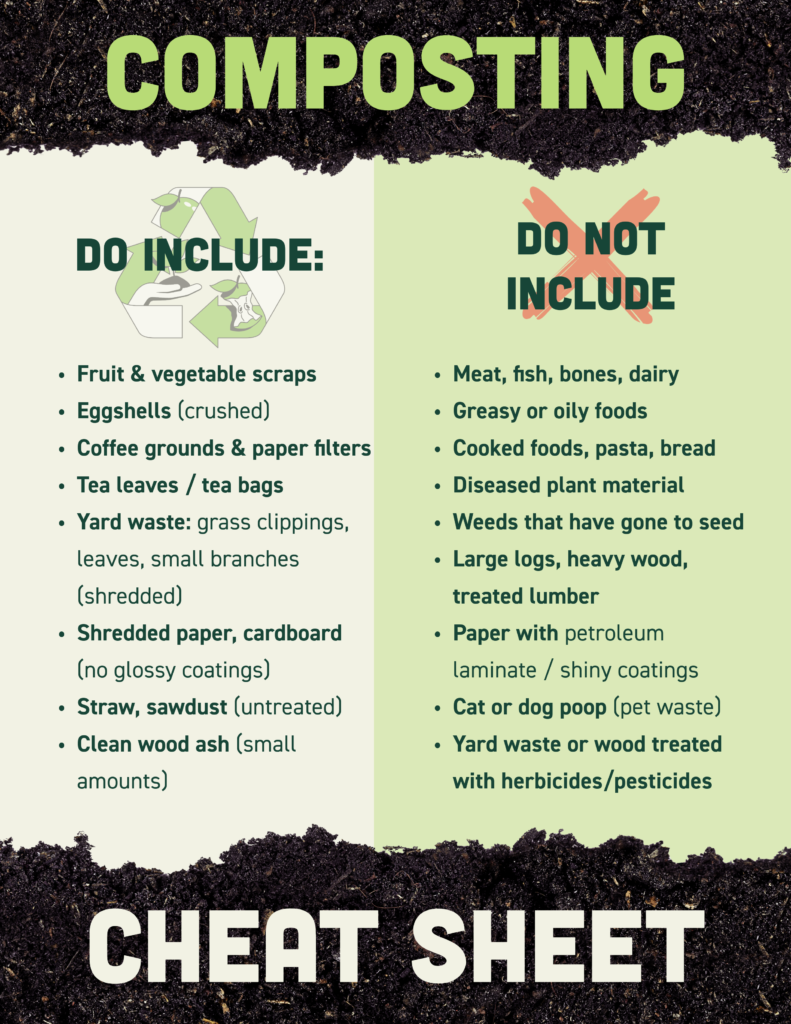
Tip: Chop or shred larger pieces to speed up decomposition.
How to Start Composting at Home
Here’s a step-by-step guide that’s easy, free (or low-cost,) and doable even in small spaces.
Step 1: Collect Your Scraps
The first step is a simple one: start collecting your kitchen scraps. I use a cleaned and recycled plastic coffee can with a lid on my kitchen counter to collect my daily fruit and vegetable peels, cores and skins. It’s a great way to repurpose an item that would otherwise be thrown away and keeps any potential odors contained.
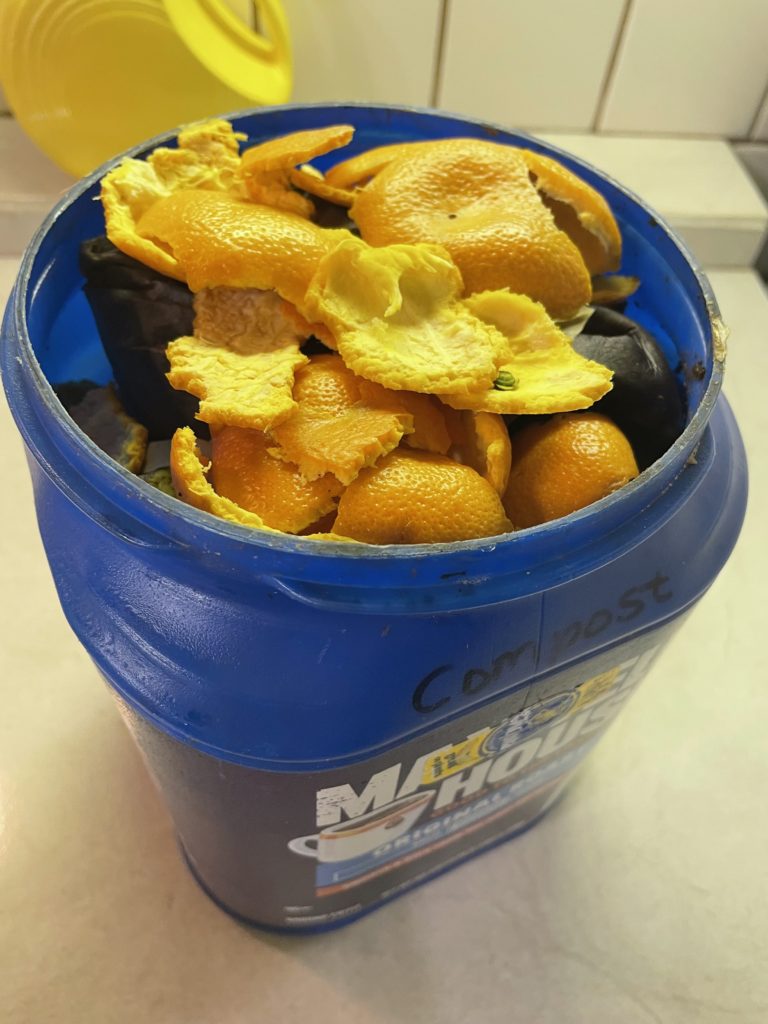
If you’re concerned about smells or if you plan to compost later, a simple trick is to use the freezer. I keep a plastic bag in my freezer and toss in fruit and vegetable scraps as I go. This is especially handy if you’re saving your scraps to bring to a friend or a local farm. Freezing the scraps stops them from decomposing and eliminates any odors.
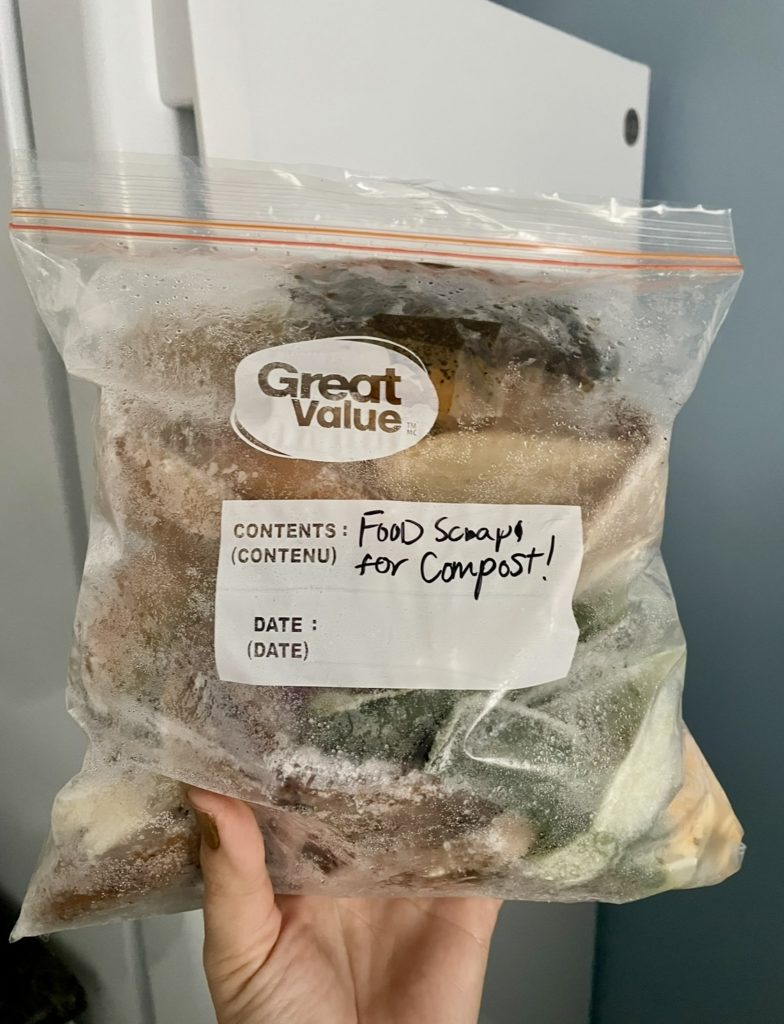
Step 2: Choose Your Bin/System
You don’t need an expensive compost bin to get started. Large, repurposed barrels work excellently.
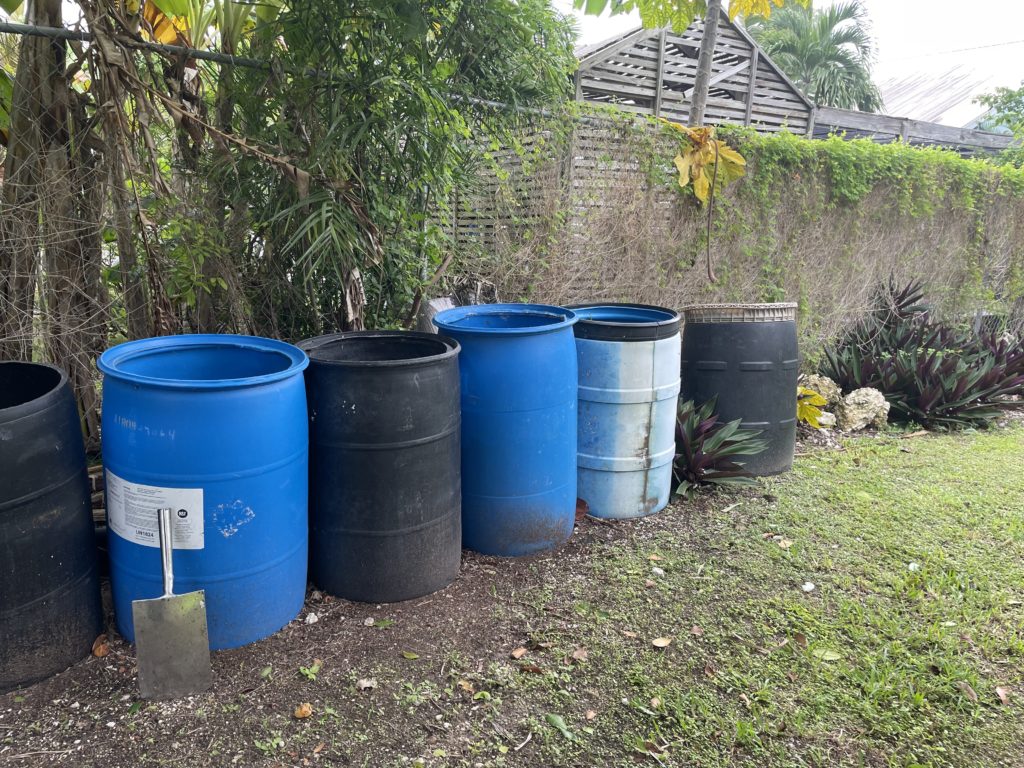
You have many options depending on your space:
- Open pile/heap: If you have yard space and plenty of material.
- Bin or barrel systems: A simple, contained option that’s easy to build or buy.
- Tumbler composters: Rotating barrels that make mixing easy.
- Worm bins (vermicomposting): Excellent for small-scale, indoor composting.
- Trenching: Burying scraps directly in garden beds.
Key features to look for in any system are good drainage holes, ventilation for airflow, and a lid or cover to keep out pests and rain.
Step 3: Layer & “Feed” the Bin
This is where the magic happens. You want a mixture of “greens” (nitrogen-rich) and “browns” (carbon-rich). A good rule of thumb is a ratio of ~1 part green to 2–3 parts brown. Alternate thin layers: greens, then browns. Cover each new batch of greens with some browns to minimize odors and flies. If your bin is new, start with a base layer of browns or coarse material like small branches to allow airflow at the bottom.
Step 4: Water & Aeration
Your pile should be as damp as a wrung-out sponge—moist, not soggy. In dry periods, add water. In heavy rains, ensure good drainage or cover it to prevent flooding. To keep it aerobic (oxygen-rich), turn or mix your pile regularly, perhaps once every week or two, depending on the size. If you hear gurgling or smell sour odors, that’s a sign you need to aerate.
Step 5: Patience & Management
In a tropical climate like ours, decomposition can happen faster, which is great! Just keep a few things in mind:
- Chop or shred materials if you can: Smaller bits equal faster breakdown.
- Monitor moisture: If it’s too wet, add more browns. If it’s too dry, add water.
- Cover it: Our tropical sun and heavy rain can disrupt the process. Use a lid, tarp, or even palm fronds to maintain a stable moisture level.
Over time, your pile will shrink, darken, and smell “earthy.” That’s compost ready to use.
Troubleshooting: Common Issues
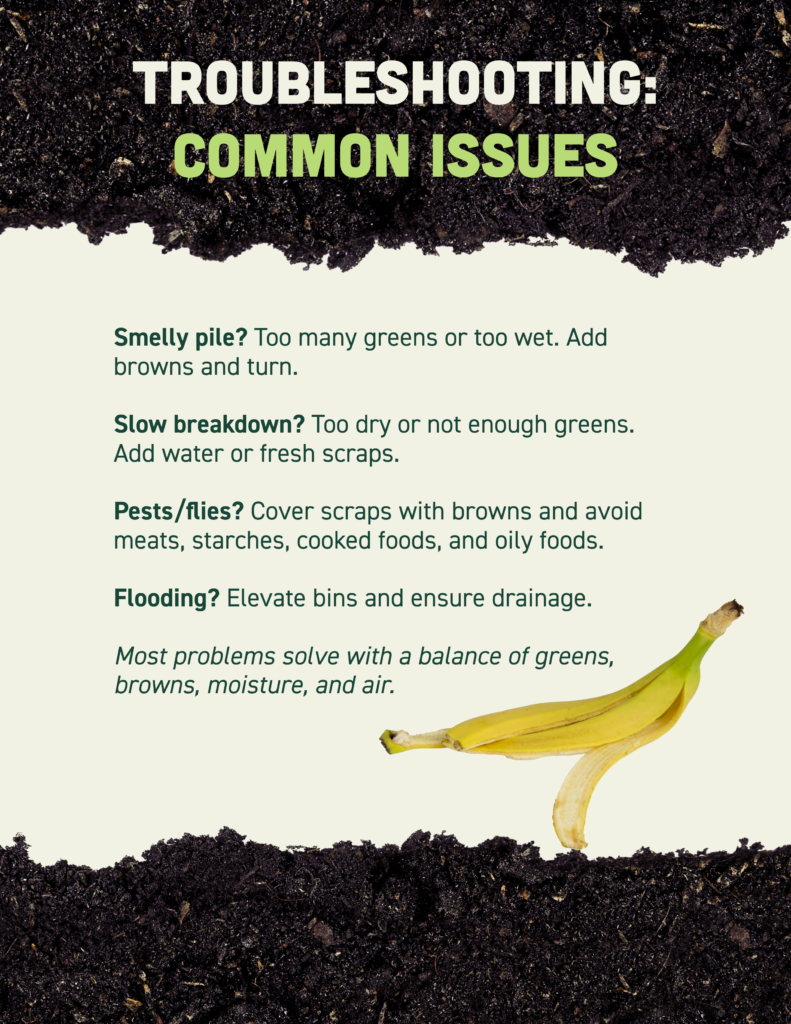
Tips for Island Environments
Because we live in a hot, humid, and sometimes rainy environment, here are some special tweaks to make composting more successful in The Bahamas:
- Keep It Covered & Shaded: Tropical sun and heavy rain can disrupt your compost. Use a lid, a tarp, or even a local material like a thatch roof to maintain stable moisture and temperature.
- Ensure Good Drainage: Use bins with bottom ventilation or elevate them off the bare ground.
- Mix Carbon-Rich Materials: In dry spells, add dry leaves, shredded cardboard, or coconut husk fiber to maintain balance.
- Leverage Local Green Waste Sources: The Bahamas has plenty of yard waste available. Pruned branches, palm fronds, and leaves are all excellent “browns.”
- Frequent Monitoring: Because decomposition is faster, keep an eye on moisture, odors, and pests. Turn more often if you see issues.
Inspiring Caribbean Composting Projects
It’s one thing to talk theory, another to see composting in action. All across the Caribbean, communities are proving that this is a powerful solution for our unique challenges. Here are just a few examples:
- Saint Lucia: A pilot program at the Deglos landfill diverts green waste for compost production, reducing pressure on the landfill and enriching local soils.
- Exuma, The Bahamas: Recycle Exuma undertook a comprehensive multi-year study and a pilot food-waste composting program at Sandals Emerald Bay resort. The study revealed a significant breakthrough, highlighting that nearly 50% of the resort’s waste is compostable.
- Eleuthera, The Bahamas: The Island School has practiced composting since its inception to turn food waste into fertile soil and sequester carbon. At the school, food waste is manually sorted into three categories: food scraps for pigs, compost piles, and meat scraps to breed Black Soldier Fly larvae that feed their chickens and tilapia. This integrated model is a living example of a circular waste system.
- New Providence, The Bahamas: Soul & Soil, led by Nicholas Fox (Da Compost King), runs a monthly subscription that collects food scraps from homes, businesses, and schools and turns them into valuable compost. Alongside the innovative service, Fox educates and engages the community, showing how everyday waste can build healthier soils and greater food security.
These examples show that composting is already part of the regional conversation—not just for gardens, but for waste infrastructure, climate action, and community resilience.
Getting Started with Compost Checklist
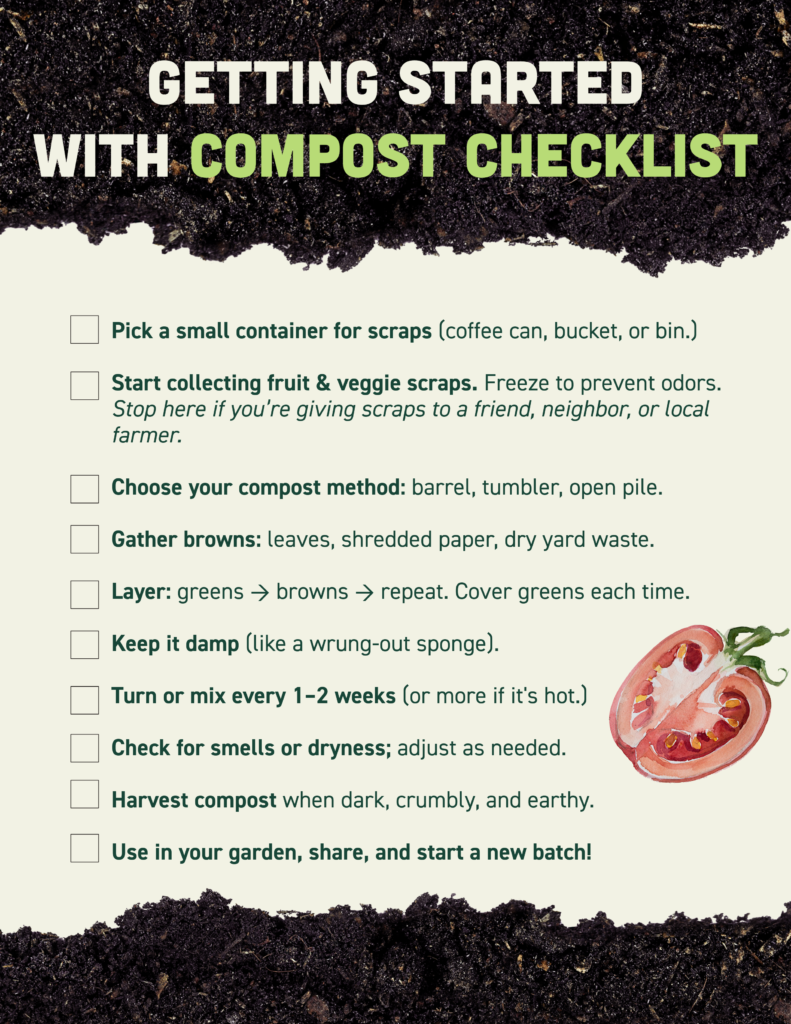
Why It Matters—For You, Your Garden, Your Island
By composting, you are doing more than just reducing your trash. You’re cutting methane emissions, reclaiming nutrients to build living soil, and practicing food sovereignty by producing your own inputs.
Every peel and leafy scrap you divert helps create a circular, regenerative Bahamas.
Composting is how we turn today’s scraps into tomorrow’s soil. And that’s a legacy worth cultivating.🌱
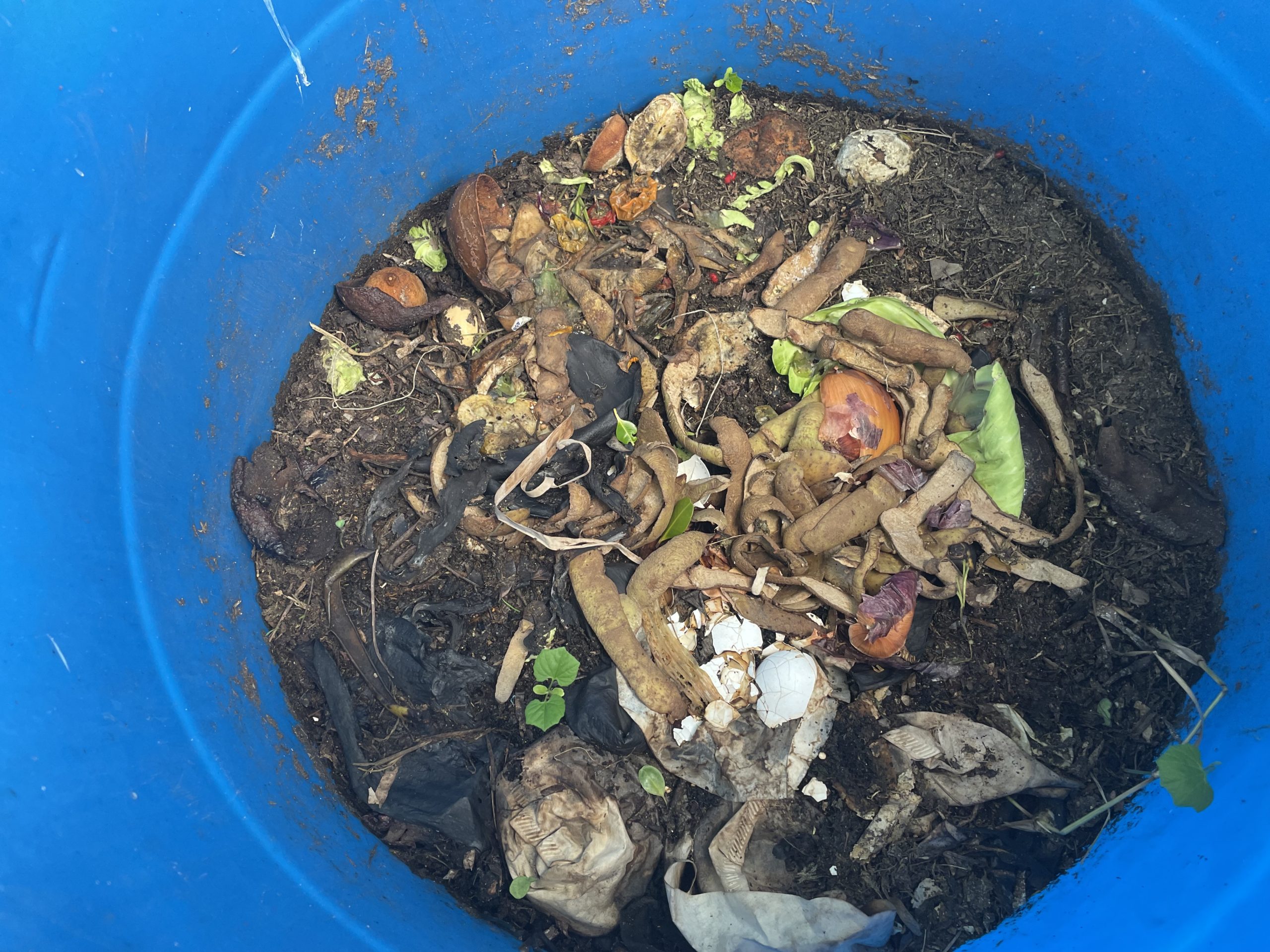
Great article! It’s very helpful to know just how easy it is to make rich, healthy soil. The impact of simple steps like this is a game changer for islands with limited waste management and resources. Kudos to the islands where an organized effort is happening. Thank you for making this easy to follow guide!